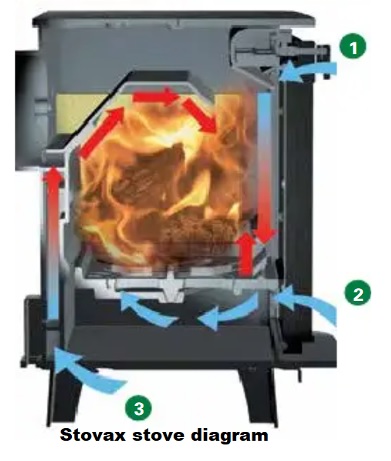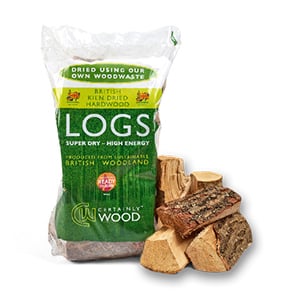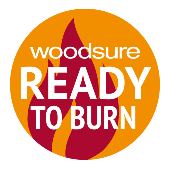FAQ's
Points to consider when looking for a wood burning or multifuel stove

Stove Types =
freestanding = You can see the sides of the stove and have space around the stove.
Inset stove = This type of stove is inserted in to a wall or fireplace and you only see the front of the stove. There is no gap at the sides. Small versions of these can often be fitted where an inset gas fire or open fire used to be.
Where you live: If you live in a smoke control area and want to burn wood legally, you will need a DEFRA approved stove. If you don't live in a smoke control area you can burn dry wood on any multifuel or wood burning stove. You can find this out by checking with your local council.
Size of stove:
The heat a stove gives out is measured in Kilowatts = Kw
The measurements below are provided as a rough guide only. If you feel that you have a cold house (eg. high ceilings, solid walls, single panel windows) you can pick a stove with a larger output and vise versa if the stove is for secondary heating and you feel that you have a warm house you can pick a smaller stove, also please remember that stove outputs are not fixed and you will not get 5kw out of a stove if you only put one small log on.
for a room up to -
- 5mtrs x 4mtrs = 4wk stove - 5mtrs x 6mtrs = 5kw stove
- 5mtrs x 7mtrs = 6kw stove - 5mtrs x 8mtrs = 7kw stove
- 5mtrs x 9mtrs = 8kw stove - 5mtrs x 10mtrs = 9kw stove
- 5mtrs x 11mtrs = 10kw stove - 5mtrs x 12mtrs = 11kw stove
Also bear in mind where you are fitting the stove, the size of your fireplace or chimney breast can determine the size of stove you can have.
Multifuel or Wood burning Stove?
wood burning stove = dry wood logs, or compressed sawdust logs only - These types of stoves often have a flat bottom and once the fire has burnt the ash can be shovelled out.
multifuel stove = Smokeless fuels, dry wood logs, compressed sawdust logs, peat etc. This type of stove has a raised grate to burn your fuel on with an ashpan underneath to catch the ashes, the ashpan is then used to empty the ashes, this can be done even when the fire is still burning. It has at least two types of air flow to allow you to burn different fuels.

Stove characteristics
Airwash = 1 on diagram below – this brings a flow of air down the front of the glass inside the stove to try and keep the glass cleaner. On most stoves this doubles as the combustion air control when you are burning wood.
Primary Air =2. on diagram. Primary air for use with smokeless fuels on multifuel stoves only bring air up under the grate.
Cleanburn = 3. on diagram secondary air is pre-heated as it passes through a heat exchanger chamber within the fire box. It is then drawn into the smoke stream, where it combusts unburnt hydrocarbons to provide a cleaner burn and greater thermal efficiency
Kw (kilowatt) = this is the units used to measure the heat output of all heating appliances and stoves, however for multifuel and woodburning appliances this is not fixed eg. if you only put one small log on the fire you will not get the full output of the fire. In basic terms the bigger the fire the bigger the Kw heat output as you can fit more fuel/logs inside it.
Riddling grate = means the stove has a moving part inside to help knock ashes from on top of the grate in to the ashpan below
DEFRA = means the stove will burn wood products/logs more cleanly so you can burn these products in a smoke control area. (eg. Castleford) You can check your area by contacting your local council.
Smoke Control Area = a lot of urban areas are smoke control areas where you Legally can only burn approved smokeless fuels or face fines from the council. Wood and ordinary house coal are NOT approved for use in these areas. You can check your area by contacting your local council. You can however burn wood in a smoke control area if you have a Defra approved appliance/ stove.
External air outlet = Stoves require air for efficient combustion. Stoves marked as having an external air outlet means the stove can be connected directly to the outside, through an external wall to take this air directly from outside your home.
| |

 The importance of burning quality Fuels and DRY wood. Your fire performs at its best when burning the correct fuels. Wood needs to be 20% or less moisture content. Incorrect fuels can cause your fire to work incorrectly and can even damage your appliance. The moisture condensing in your chimney from wet wood can cause a build up of tar and other chemicals which lead to chimney fires and corrode liners. If your burning wood a MOISTURE METER is a must buy item so you can test your wood. Always look for the "Woodsure ready to burn" logo on (or at point of sale) to make sure your getting wood products that are up to standard.
The importance of burning quality Fuels and DRY wood. Your fire performs at its best when burning the correct fuels. Wood needs to be 20% or less moisture content. Incorrect fuels can cause your fire to work incorrectly and can even damage your appliance. The moisture condensing in your chimney from wet wood can cause a build up of tar and other chemicals which lead to chimney fires and corrode liners. If your burning wood a MOISTURE METER is a must buy item so you can test your wood. Always look for the "Woodsure ready to burn" logo on (or at point of sale) to make sure your getting wood products that are up to standard.
